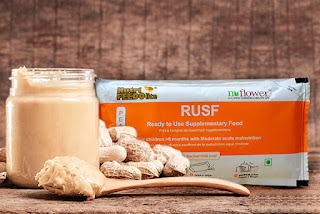5 Key Considerations for Branding Your White Label Peanut Butter
In the competitive world of food products, especially in the
ever-growing peanut butter market, effective branding can make or break a
product’s success. For importers seeking to stand out globally, white label
peanut butter presents an excellent opportunity to offer unique, high-quality
products under their own brand names. As a leading peanut butter manufacturer
based in India, we, at Nuflower understand
the critical factors that can set your white label peanut butter apart from the
competition. Here are five key considerations for branding your white label
peanut butter to make a lasting impression in the global market:
1. Craft a Distinctive Brand Identity
Creating a unique brand identity is the cornerstone of a
successful white label peanut butter brand. This involves more than just a
catchy name and logo; it’s about developing a comprehensive visual and
emotional identity that resonates with your target audience. Start by defining
your brand’s core values and messaging. Are you positioning your peanut butter
as a premium, gourmet product or as a health-conscious, organic option?
Incorporate these values into your brand’s visual elements,
such as packaging design, logo, and color scheme. For example, if you are
marketing a premium product, consider using elegant, minimalistic designs and
high-quality materials. Conversely, if your focus is on health and wellness,
vibrant colors and clear, informative labeling can highlight nutritional
benefits. A well-defined brand identity helps create a strong, memorable
impression on consumers and establishes a connection that can drive loyalty and
repeat purchases.
2. Emphasize Flavor Customization
One of the major advantages of white label peanut butter is the
ability to offer customized flavors that cater to diverse consumer preferences.
As a manufacturer, our strength lies in our ability to create unique flavor
profiles that can set your product apart in the market. Whether it’s adding a
touch of exotic spices, incorporating popular ingredients like chocolate or
honey, or crafting unique blends, flavor customization can be a significant
differentiator.
Leverage this capability by highlighting your range of
flavor options in your branding strategy. Show potential clients how you can
tailor flavors to meet specific market demands or seasonal trends. Providing
samples of your customized flavors can also be an effective way to entice
importers and demonstrate the quality and uniqueness of your offerings.
3. Ensure Quality and Compliance
In the global market, quality and compliance are
non-negotiable. Consumers and importers alike demand high standards in product
quality, safety, and regulatory compliance. For white label peanut butter, this
means adhering to stringent quality control processes and meeting international
food safety standards.
Our manufacturing process emphasizes rigorous quality checks
and adherence to global standards, ensuring that every batch of peanut butter
is consistently high-quality and compliant with regulations. Highlighting your
commitment to quality and compliance in your branding can build trust with
potential importers. Provide detailed information about your quality assurance
practices and certifications, and be transparent about your adherence to
international food safety regulations. This not only reassures clients about
the reliability of your product but also positions your brand as a trustworthy
partner.
4. Develop a Strong Packaging Strategy
Packaging plays a crucial role in branding and consumer
perception. It’s not just about protection and convenience; it’s an essential
aspect of your brand’s identity and marketing strategy. Effective packaging
should attract attention, convey your brand message, and enhance the overall
consumer experience.
Consider factors such as design, functionality, and
sustainability when developing your packaging strategy. High-quality,
eye-catching packaging can make your product stand out on store shelves and
online platforms. Additionally, incorporating eco-friendly materials can appeal
to environmentally-conscious consumers and align with global sustainability
trends. Highlight these aspects in your branding efforts to showcase your
commitment to quality and innovation.
5. Leverage Market Trends and Consumer Insights
Understanding and leveraging market trends and consumer
insights is vital for successful branding. Stay informed about current trends
in the peanut butter market, such as increasing demand for natural and organic
products, and tailor your branding strategy accordingly.
Conduct market research to gain insights into consumer
preferences and behaviors. This can help you identify opportunities for
differentiation and ensure that your branding aligns with market demands. For
example, if there’s a growing trend for protein-enriched products, consider
highlighting the nutritional benefits of your peanut butter in your branding.
Additionally, engage with your target audience through social media, surveys, and feedback to continuously refine your branding strategy. By staying attuned to market trends and consumer preferences, you can adapt your branding efforts to remain relevant and appealing to your target audience.
Branding your white label peanut butter effectively
requires a strategic approach that encompasses a distinctive brand identity,
flavor customization, quality and compliance, packaging, and market insights.
As a leading manufacturer based in India, we offer customized solutions that
prioritize these key considerations, helping you create a standout product in
the global market. By focusing on these elements, you can position your white
label peanut butter as a unique, high-quality offering that meets the needs and
preferences of consumers worldwide.
Reach out to us at info@nuflowerfoods.com to explore
how our white label peanut butter solutions can elevate your brand and capture
market attention. Together, we can create a product that not only meets global
standards but also delights consumers with every spoonful.




Comments
Post a Comment